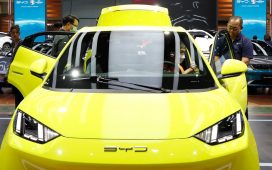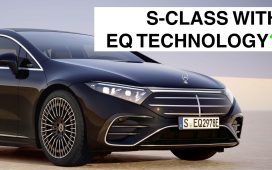The MG4 will go even further – 270 miles, if you go for the top-spec Trophy Long Range model – while the Renault Megane E-Tech will do 280 miles on a charge (although that figure drops off considerably in the winter as it doesn’t get a heat pump).
And all of these cars are quite a bit cheaper. The VW will set you back £37,115, the Renault £36,995, and the MG just £32,495. Even a Tesla Model 3 starts at £42,990. That starts to make the £40,000-plus Astra look mighty pricey.
That’s going to matter not only for private buyers, but also for the company car drivers among whom electric cars are taking flight. Because while the figures involved in taxing an EV are relatively miniscule, they are influenced by the list price of a car – the higher it is, the more it costs to tax. Are those user-choosers going to want to pay more to tax a Vauxhall Astra, with less range than its rivals? Hmm.
Going equipped
On the plus side, you do at least get a fairly generous equipment list as standard. The entry-level Design version that’s available on internal combustion engined variants of the Astra is foregone for the electric model, so the line-up starts with the mid-range GS – perhaps one reason for its high price tag.
That means you get dual-zone climate control, adaptive cruise control, heated seats and a heated steering wheel all as standard, and the electric GS gets 18-inch wheels where the combustion-engined car only has 17-inch items.
You can upgrade further to the Ultimate model we’re testing here; do so and you get adaptive headlights, a head-up display, a panoramic sunroof and an electrically adjustable driver’s seat (though oddly, the passenger seat remains manual, where it’d be electric in the petrol or plug-in hybrid version).
Trouble is, that turns this from a £40,000-plus car into one that costs more than £43,000. And to put it simply, the Astra doesn’t feel like it can reasonably command that price tag from inside.
True, it’s well designed inside, with proper buttons everywhere including to adjust the temperature (in stark contrast to the silly touch-everything ideology of the ID.3), and smart styling.
There are even some nice soft-touch plastics here and there, and the infotainment system, while a little unintuitive in places, is mostly decent enough to use – all of which makes it a better effort than the interiors of either of its most direct rivals.
But given the price, you might be expecting a whole lot more. After all, this is a car that’s only a couple of thousand pounds shy of the entry-level versions of the Polestar 2 and Kia EV6 – and while those cars don’t come with as many toys, their cockpits feel a cut above (and, let’s not forget, you get vastly more range into the bargain).
Space oddity
And it’s not as if the Astra can boast more practicality than its rivals to make up for this high price, either. In fact, the back seats feel rather cramped compared to those of the ID.3 and MG4. You’ll still fit if you’re tall, but your knees might brush the backs of the front seats. The tight door apertures might make installing bulky child seats a little more tricky, meanwhile.
The boot, too, is rather small – at just 352 litres there’s less space than in any of its rivals. What’s more, there’s no under-floor storage for the charging cables, so if you want to carry them with you, they have to live in a bag that sits in the boot itself, sapping space further still.








